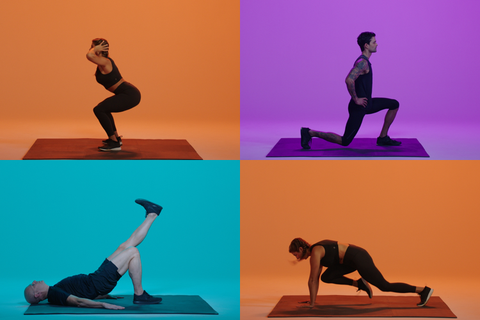The fitness world seems to be filled with trends, diets, methods, and advice. It can be hard to navigate your way through all the confusion. Two popular methods of fitness training include calisthenics and plyometrics. They are very similar and often confused with each other. However, there is a difference and it’s beneficial to understand how they differ. This way you can choose the type that best suits you and your goals.
The difference between calisthenics and plyometrics is defined by the impact. Both are performed using your body weight and without any equipment. Calisthenics is low-impact and focuses on basic strength and movement. Plyometrics is a step above this by incorporating these basic movements with jumping and agility training. When just starting off try working your way through calisthenic exercises and once you feel comfortable, start adding jumps and quick bursts of rapid movement.
Calisthenics
Some examples of calisthenics moves are as follows:
Push-ups
Squats
Lunges
Planks
Duck Walks
Pull-ups
Handstands
Wall Sits
Situps/ Crunches
As you can see from this list calisthenic exercises use just your body weight and are low-impact. All of these moves are basic and fundamental building blocks to any fitness regimen.
Calisthenic moves are basic and build a solid foundation for more advanced exercises. Learning proper form and building strength at this level is how to achieve overall greater athleticism. If you are beginning your fitness journey, are recovering from an injury or coming back after time away then starting here is ideal. Also, knowing how to properly perform base exercises helps to prevent injury and muscle strain.

You can customize a calisthenics routine by combining 3-5 of the exercises above into a group. Perform each exercise 10 times and then repeat it 3-5 more times. Build your strength and endurance off of that and alter is as you become stronger and more confident. It is important to note that these are foundational exercises that should be in everyone’s exercise vault. You are never too advanced to do a round of squats or push-ups. Regularly incorporate these base movements in ways that challenge you. If you can do 30 squats then try doing 80 or adding weight.
Plyometrics
Some examples of plyometrics moves are as follows:
Jumping Jacks
High Knees
Skaters
Tuck Jumps
Squat Jumps
Clapping Push-ups
Star Jumps
Box Jumps
Plank Jacks
As you can see from these examples of plyometric exercises they involve more impact and are more intense. These types of moves elevate the heart much faster which means you’ll burn more calories and get a better cardiovascular workout.

Plyometrics is the building block that layers on top of calisthenics. It is about taking base exercises and making them more challenging and interesting. A calisthenic exercise like a squat is turned into a plyometric workout by making it a squat jump. You took the base exercise of a squat and made it more challenging by adding a jump. Once calisthenics is mastered you can move on to advanced plyometrics moves. This way you will receive much more of a well-rounded workout because plyometrics has the added bonus of a more elevated heart rate and active cardio.
Finally
You might notice the difference after taking a look at those examples above. Plyometrics is all about jumping and bursts of high energy moves. Calisthenics focuses on the base of those moves. You won’t exactly be able to perform a clapping push-up if you can’t do a standard push-up. Start with calisthenic exercises and slowly incorporate plyometric moves to rapidly gain strength and endurance.



